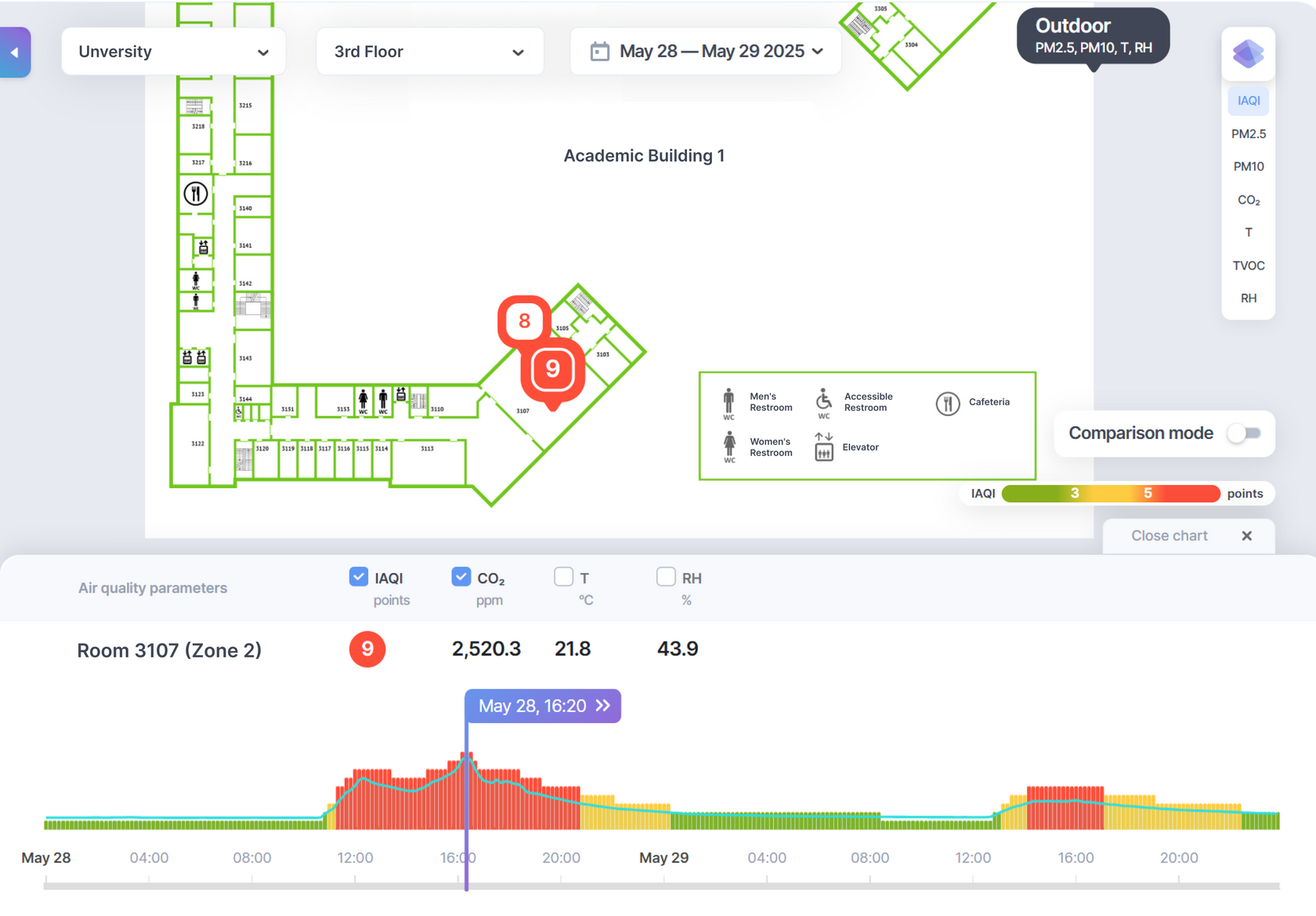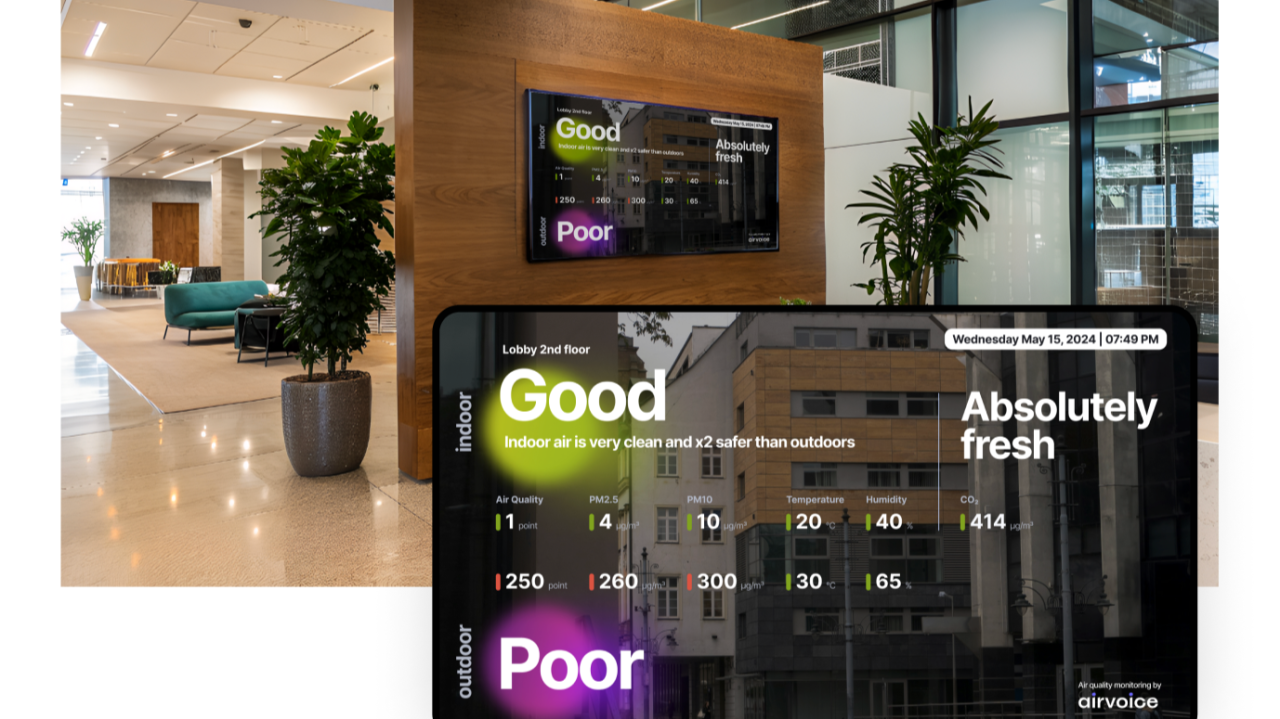A leading university recently partnered with Airvoice to monitor indoor air quality during an exam day. Despite modern HVAC infrastructure, the monitoring revealed high CO₂ concentrations and poor ventilation, underscoring the critical need for real-time data to ensure healthy, high-performance learning environments.
Context
A leading university recently partnered with Airvoice to monitor indoor air quality during an exam day. Despite modern HVAC infrastructure, the monitoring revealed high CO₂ concentrations and poor ventilation—underscoring the critical need for real-time data to ensure healthy, high-performance learning environments.
Monitoring Results
Reality told a different story.
Using two indoor monitors integrated with the Airvoice platform, we tracked air quality in one of the classrooms during an exam.
The data revealed a very unhealthy IAQ Index of 8, with CO₂ levels exceeding 2,000 ppm (clear indicators of poor ventilation under high occupancy).
Using two indoor monitors integrated with the Airvoice platform, we tracked air quality in one of the classrooms during an exam.
The data revealed a very unhealthy IAQ Index of 8, with CO₂ levels exceeding 2,000 ppm (clear indicators of poor ventilation under high occupancy).
Why It Matters:
The monitoring took place during an exam, when the room was filled to capacity.
In these critical moments, when students needed to focus, think clearly, and perform at their best, the air they were breathing was working against them.
Poor indoor air quality directly impacts cognitive function, alertness, and decision-making, meaning students may not have been able to demonstrate their full potential.
If such conditions persist, the long-term effects may include lower academic performance and increased health risks due to a higher likelihood of airborne virus transmission.
In these critical moments, when students needed to focus, think clearly, and perform at their best, the air they were breathing was working against them.
Poor indoor air quality directly impacts cognitive function, alertness, and decision-making, meaning students may not have been able to demonstrate their full potential.
If such conditions persist, the long-term effects may include lower academic performance and increased health risks due to a higher likelihood of airborne virus transmission.
Outcomes
This case highlights a fundamental issue: even with high-quality HVAC systems in place, actual indoor conditions can fall short of expectations due to gaps between how systems are designed, installed, and operated.
That’s why continuous, real-time air quality monitoring is not optional — it’s essential. It ensures that ventilation and filtration systems perform as intended, supporting health, wellbeing, and academic success.
That’s why continuous, real-time air quality monitoring is not optional — it’s essential. It ensures that ventilation and filtration systems perform as intended, supporting health, wellbeing, and academic success.










